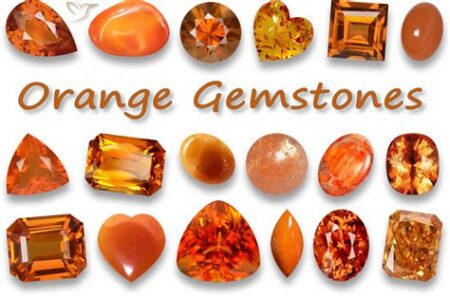Crystals, with their captivating beauty and mystifying allure, have intrigued humankind for centuries. From ancient civilizations to modern-day enthusiasts, these ethereal gems have adorned jewelry, influenced spiritual practices, and sparked scientific curiosity. But beneath their enchanting surfaces, a fundamental question lingers: how much are crystals worth?

Factors Determining Value
The value of a crystal is a complex equation influenced by numerous factors, including:
- Clarity: The transparency and absence of inclusions or flaws enhance a crystal’s aesthetic appeal and rarity, increasing its value.
- Carat weight: Measured in carats (1 carat = 0.2 grams), the size of a crystal significantly impacts its price. Larger crystals are rarer and generally command higher premiums.
- Color: The intensity, hue, and saturation of a crystal’s color play a crucial role in its value. Rare and vibrant colors, such as intense blue sapphires or emerald-green emeralds, are highly sought after.
- Cut: The skill and precision used in cutting a crystal can maximize its brilliance and symmetry, adding to its value.
- Origin: The geographical source of a crystal can also affect its value. Certain regions are known for producing crystals of exceptional quality, increasing their desirability.
Market Prices and Trends
According to the Gemological Institute of America (GIA), the global gemstone market is estimated to be around $27 billion annually. The value of individual crystals varies widely depending on the aforementioned factors.
- Diamonds: As the most valuable gemstone, the price of diamonds is determined by the widely accepted 4Cs (carat, cut, clarity, color). A 1-carat, D-color (highest grade) diamond can fetch tens of thousands of dollars.
- Rubies: Prized for their deep red color, rubies of high clarity and over 1 carat can command prices exceeding $100,000 per carat.
- Sapphires: Blue sapphires are highly valued for their purity of color and exceptional clarity. A 10-carat, cornflower-blue sapphire can be priced at around $100,000.
- Emeralds: Known for their vibrant green hues and transparency, emeralds of over 5 carats are considered exceptionally rare and can fetch hundreds of thousands of dollars per carat.
- Opals: Characterized by their iridescent play of colors, opals are valued based on the brightness and pattern of their fire. A rare black opal with vivid rainbow patterns can be worth millions of dollars.
Investment Potential
Crystals have been recognized as alternative investment options in recent years. However, it’s essential to approach gemstone investments with caution and thorough research. Factors to consider include:
- Liquidity: Unlike stocks or bonds, crystals can be less liquid, meaning they may take longer to sell and access their value.
- Expertise: Investing in crystals requires a deep understanding of their quality, origin, and market trends.
- Volatility: The value of crystals can fluctuate based on supply and demand, making them a potentially volatile investment.
The “Crystalphorium”
Noun – “Crystalium” (plural – “crystalium”) – a versatile creation combining the beauty of crystals with cutting-edge technology.
This innovative concept envisions a fusion of crystals and advanced materials, unlocking novel applications and enhancing our lives. Think of it as the “Internet of Crystals.”
Potential Applications:
- Crystal-infused jewelry: Combining the aesthetic appeal of gemstones with the potential therapeutic benefits of crystals.
- Smart crystals: Embedded with sensors and microcontrollers, crystals could monitor health metrics, provide personalized guidance, or act as security tokens.
- Crystalline architecture: Utilizing the optical and structural properties of crystals for sustainable and aesthetically pleasing building designs.
- Crystal-powered energy sources: Exploring the piezoelectric and photovoltaic potential of crystals as alternative energy sources.
- Medical applications: Investigating the therapeutic effects of crystals in holistic healing and medical devices.
Tables
| Crystal | Value Range |
|---|---|
| Diamond (1 carat, D-color) | $50,000 – $100,000 |
| Ruby (1 carat, deep red) | $50,000 – $200,000 |
| Sapphire (10 carats, cornflower blue) | $75,000 – $125,000 |
| Emerald (5 carats, intense green) | $200,000 – $500,000 |
| Black Opal (1 carat) | $1,000,000 – $5,000,000 |
| Crystalphorium Applications | Impact |
|---|---|
| Crystal-infused jewelry | Enhanced aesthetics, potential therapeutic benefits |
| Smart crystals | Personalized guidance, health monitoring, security enhancements |
| Crystalline architecture | Sustainable and aesthetically pleasing building designs |
| Crystal-powered energy sources | Alternative energy generation |
| Medical applications | Holistic healing and medical device advancements |
Tips and Tricks
- Consult reputable sources: Seek advice from qualified gemologists or jewelry experts when making significant crystal purchases.
- Research and compare: Thoroughly research the market prices and quality of crystals from different suppliers before making a decision.
- Consider the long-term: If you’re investing in crystals, be prepared to hold them for the long term to maximize their potential value.
- Beware of scams: Avoid untrustworthy sellers or exaggerated claims about the value of crystals.
- Enjoy the beauty: Remember, the true value of crystals lies not only in their monetary worth but also in their intrinsic beauty and potential to enhance our lives.
Conclusion
The world of crystals is a fascinating tapestry woven with beauty, value, and potential. Understanding the factors that determine a crystal’s worth is crucial for making informed decisions when purchasing or investing. Whether you’re an avid collector, a curious enthusiast, or an aspiring crystalium entrepreneur, embracing the wonder of crystals brings endless possibilities for exploration and enhancement.




























